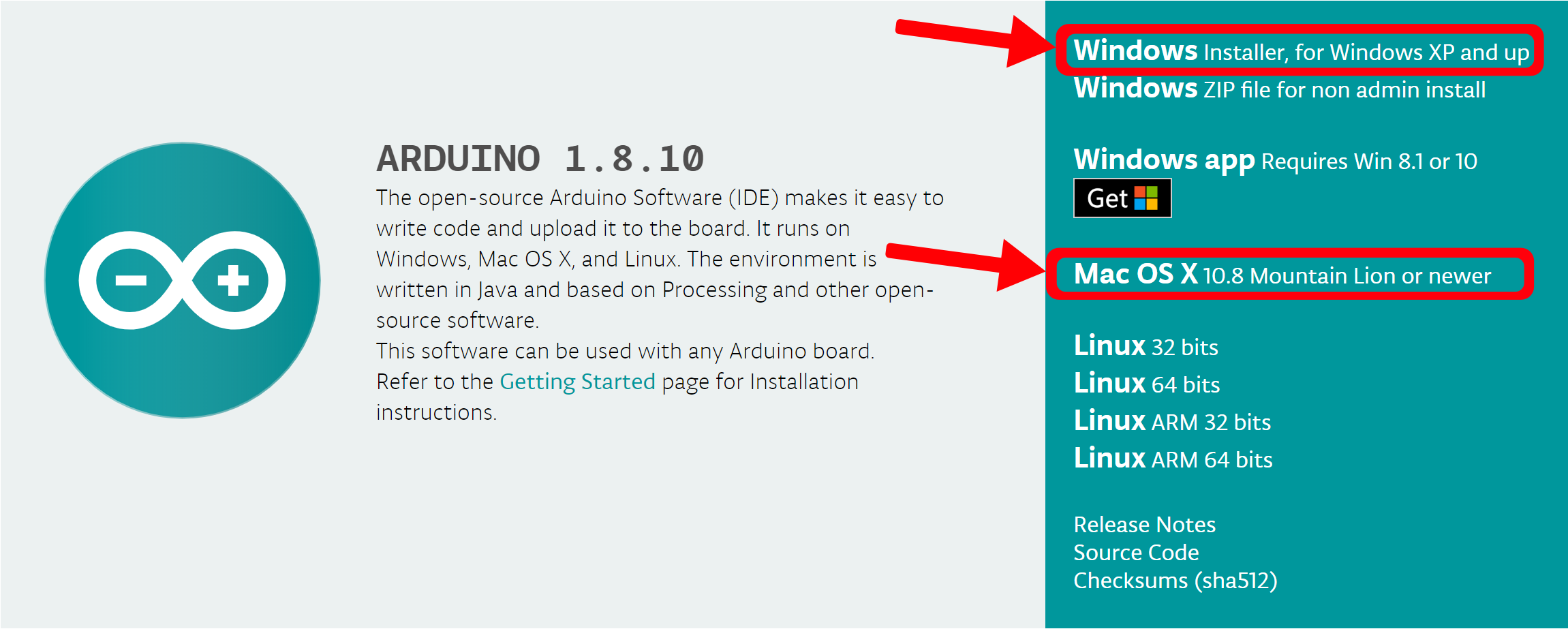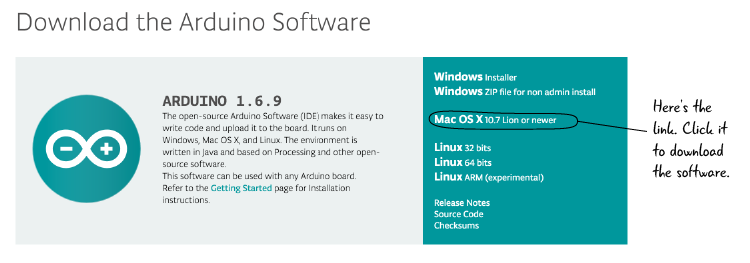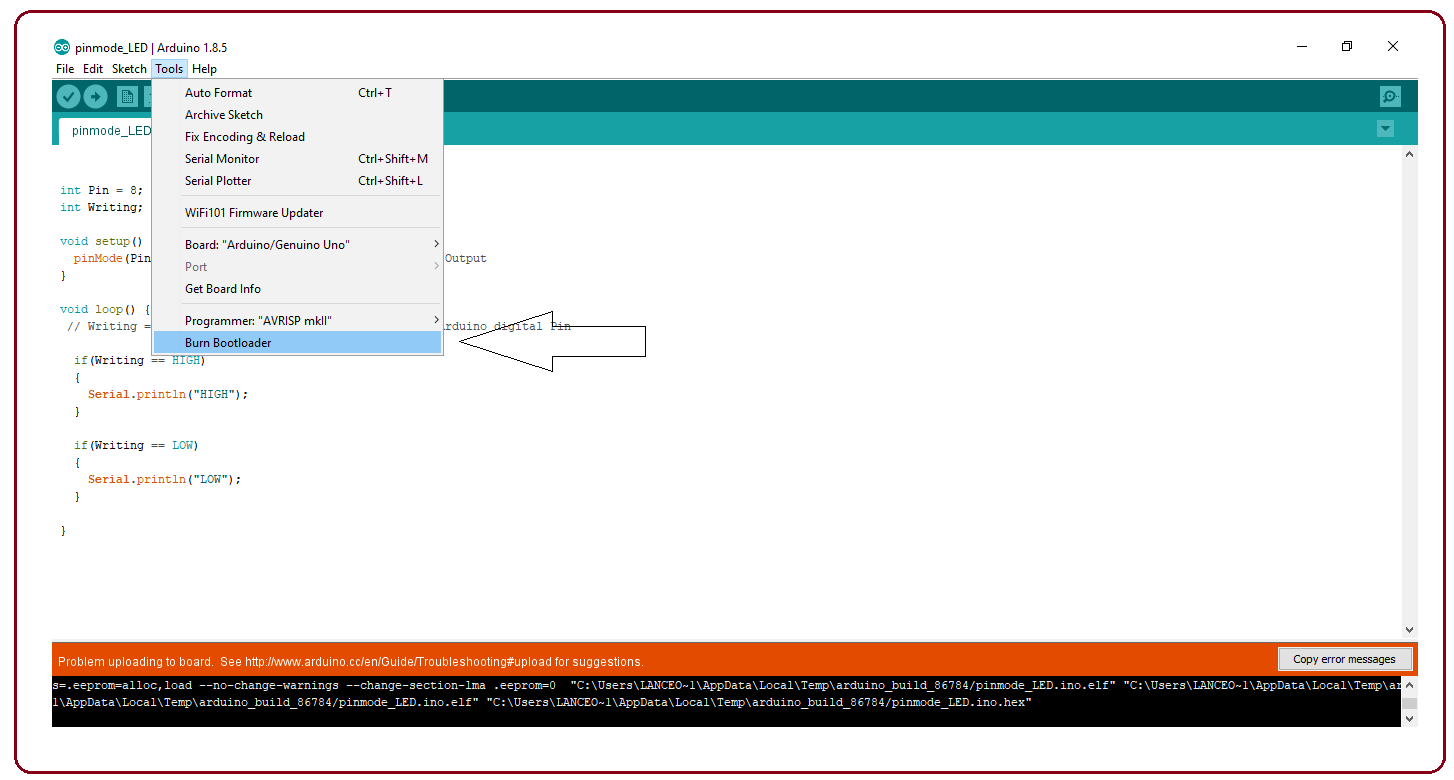

- #ARDUINO IDE DOWNLOAD FOR MAC MAC OS#
- #ARDUINO IDE DOWNLOAD FOR MAC ARCHIVE#
- #ARDUINO IDE DOWNLOAD FOR MAC PRO#
wait for the interrupt handler to empty it a -63,7 +63,7 *

If the output buffer is full, there's nothing for it other than to + unsigned int i = (_tx_buffer->head + 1) % SERIAL_BUFFER_SIZE int i = (_tx_buffer->head + 1) % SERIAL_BUFFER_SIZE

just before the tail (meaning that the head would advance to -365,7 +365,6 HardwareSerial::begin(unsigned long baud, byte config) if we should be storing the received character into the location + unsigned int i = (unsigned int)(buffer->head + 1) % SERIAL_BUFFER_SIZE int i = (unsigned int)(buffer->head + 1) % SERIAL_BUFFER_SIZE 14,7 +14,7 following removes a few compiler warnings: -89,7 +89,7 void store_char(unsigned char c, ring_buffer *buffer) To change a warning about missing bootloader files, change the path separator from \ to /. In the files listed below, replace the line marked with - by the line marked with +: You can fix some of these by making the changes below. Especially if you have turned on “Show verbose output during compilation / upload” and “Compiler warnings: all” in the IDE preferences. The current setup still creates a number of warnings when flashing a Sketch. This step is optional, and only needed if you did not use the wavgate-ide-update.zip config files. In the IDE message window, you should see messages like “Done uploading”, “avrdude: 1244 bytes of flash verified”, and “avrdude done. If all goes well, this should actually work and lead to a LED that blinks (on for one second, off for one second). Now, you can load the blink demo and run “Upload”. Select “WAVGAT UNO R3”.Īs Port, select “/dev/cu.wchusbserial1410” or similar. You should see new boards under “Tools > Boards”. Then copy the content like this: cp -r ~/Downloads/update/* /Applications/Arduino.app/Contents/Javaįor example, the update/hardware/WAV8F/platform.txt needs to end up in /Applications/Arduino.app/Contents/Java/hardware/WAV8F/platform.txt. You should see a folder that looks roughly like this: updateĪll this content needs to go into the IDE’s installation folder. However, you can also get the configuration from this obscure.
#ARDUINO IDE DOWNLOAD FOR MAC ARCHIVE#
I recommend that you use the wavgate-ide-update.zip archive attached to this guide, because the files in there have already been patched (and so you don’t need step 4 below). This is again expected, and will be fixed in the next step.ĭownload the configuration files. However, when you launch a Sketch in the IDE, you will probably encounter the following error message: avrdude: stk500_recv(): programmer is not respondingĪvrdude: stk500_getsync() attempt 10 of 10: not in sync: resp=0x00 Now, you should see the Wavgat in /dev when you connect it: ls -l /dev/*usb*Ĭrw-rw-rw- 1 root wheel 21, 15 Oct 8 23:11 /dev/cu.wchusbserial1410Ĭrw-rw-rw- 1 root wheel 21, 14 Oct 8 23:08 /dev/tty.wchusbserial1410 Check the section “Security and Privacy” in System Preferences for any notices about blocked software. Download it, open, follow the installer steps, and reboot your computer.Īfter rebooting, You might need to unblock the driver. You can get these from adrianmihalko’s GitHub repo.Īs of this writing, you need the CH34x_Install_V1.4.pkg version. Wavgat uses a non-standard USB chip called CH340G. This is expected, and will be fixed in the next step. When you start the IDE, at this step, it will likely not see the Wavgat in the “Ports” menu. The remainder of this post assumes that this is where the IDE is located. You can get them from the original links in the post, or use the versions that I attached here.ĭo not use the Web Editor you need the IDE because we need to manually add configuration for the Wavgat.Īfter unzipping the file, copy it to “Applications”. I’m attaching to this guide a bunch of files that are distributed all over the net.
#ARDUINO IDE DOWNLOAD FOR MAC PRO#
This is a MacBook Pro (Retina, 13-inch, Late 2013).Here is my definitive guide, current as of.
#ARDUINO IDE DOWNLOAD FOR MAC MAC OS#
Getting an Wavgat Arduino Uno R3 to work on Mac OS was a challenging adventure, mainly because of poor documentation.


 0 kommentar(er)
0 kommentar(er)
